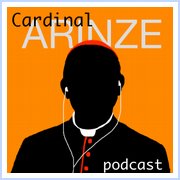Sunday, October 16, 2005
From the Jewish-Catholic front
A fascinating investigation
Yom Kippur has passed. The great day of mercy and forgiveness on which we
are commanded in the Bible to afflict ourselves is over. The shofar (rams
horn) is blasted and the Divine Presence departs just as the light of day
disappears to reveal the stars. After Yom Kippur, who can be the same as
he was the day before?
Frequently, throughout the day, I found myself reflecting on Christianity,
wondering how it fit into the spirituality revealed on this Day of Awe
culminating what are called in Jewish tradition the Days of Awe.
I couldnt find an answer. But it began to emerge last night, after the
holiday.
As often happens to me after Yom Kippur, I feel a bit at a loss. Theres
no holding on to the intensity of Yom Kippur. After doing some writing, I
listened to a CD of Gregorian chants of hymns to Mary. That soothed me.
Amazingly, the music seemed to capture something of the spirit of the
day.
This morning I awoke before dawn, still pondering the issue, when suddenly
I realized that the Incarnation is comparable to Yom Kippur. Just like
Yom Kippur, it combines the three central motifs of Divine Presence,
forgiveness and affliction. When Jesus says that he comes for the
sinners, he means that he is Yom Kippur, the day which comes for sinners
(for everyone) offering forgiveness to those who believewho believe that
Yom Kippur is a day of forgiveness--and to those who repent: Repent and
believe in the Gospel.
This helps explain the ascetic motif in Catholicism, motifs of suffering,
otherworldliness and self-denial that are historically more dominant in
Catholicism than in Judaism. For Yom Kippur is a day of affliction and
otherworldliness, a day when (this is a widespread, though not universal
custom) the white outer garment we wear is the same one in which the dead
are clothed before burial; a day on which, like angels, we neither eat nor
drink, a day on which we are commanded to afflict ourselves (as prescribed
for the healthy by Law: not to eat, drink, wash for the sake of the good
feeling of washing [to remove dirt is permitted], anoint oneself with
oils, wear leather shoes, or have conjugal relations] a day of prayer (the
prayers began at 7:00 AM in my synagogue and lasted until about 5:45 with
a single 20 minute break in the afternoon. Other synagogues might have a
longer break of up to two hours.); a day of pure mercy, a day on which the
Presence of Gd is palpable, a day of
intense intimacy with God on which a pious Jew has no heart for worldly
matters.
Also, interestingly, Yom Kippur is typically observed even by nonobservant
and sinful Jews. In the United States, where there are many Jews who do
not observe Jewish Law, the synagogues are packed on Yom Kippur. And the
people fast. My wife once observed that, even women who look like
prostitutes, people who run away from God every other day of the year,
show up at the Western Wall on Yom Kippur. On Yom Kippur, God visits His
People to gather the sinful, and the People respond.
Through the Incarnation, God gave Yom Kippur to the world.
Shanah Tovah,
All the best,
Richard



